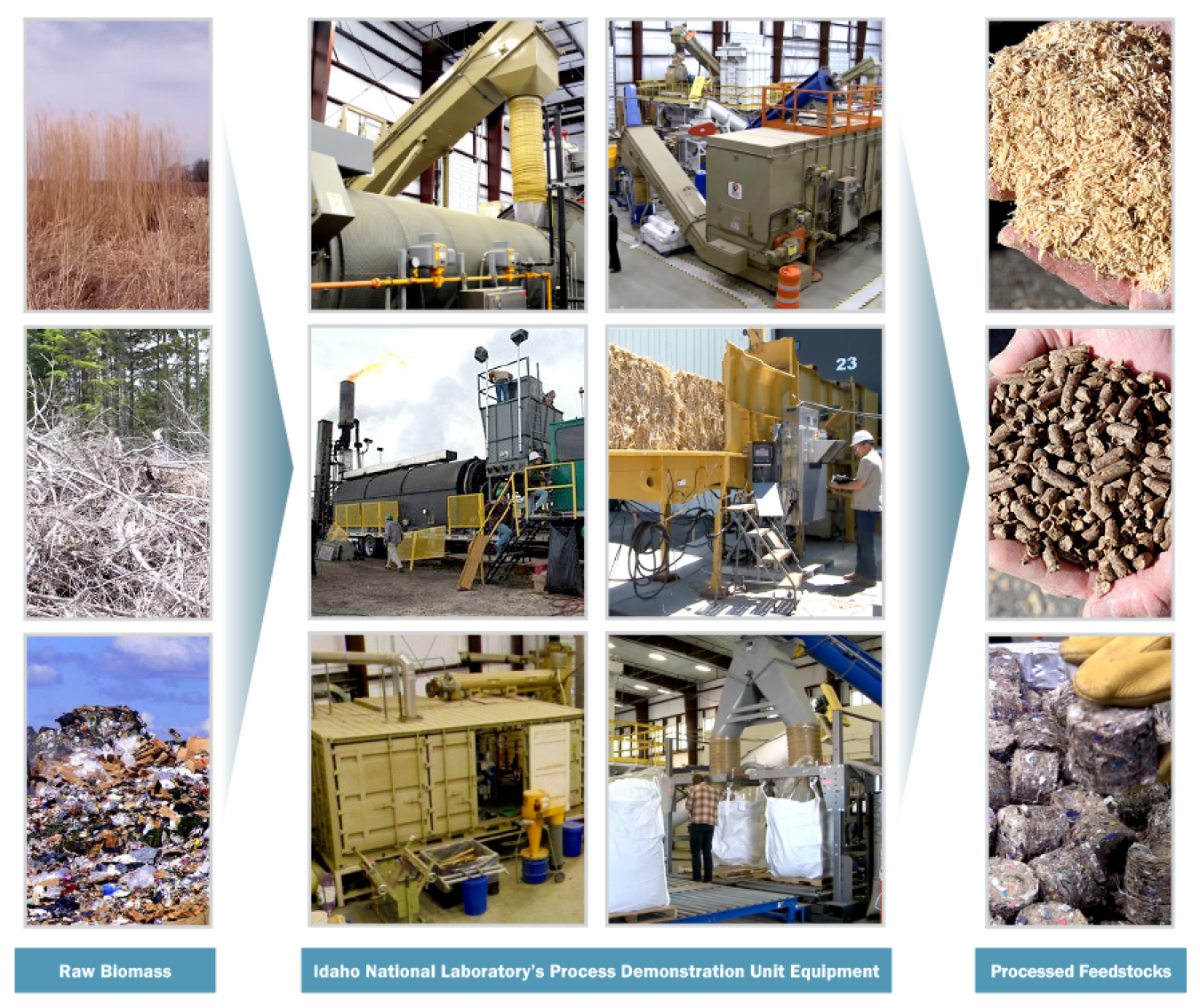In the race to achieve U.S. energy independence, the U.S. Department of Energy’s (DOE’s) Bioenergy Technologies Office is running full speed ahead.
Office of Energy Efficiency & Renewable Energy
January 24, 2018In the race to achieve U.S. energy independence, the U.S. Department of Energy’s (DOE’s) Bioenergy Technologies Office (BETO) is running full speed ahead. By 2030, America will have the potential to produce 1 billion tons of biomass per year—such as agricultural and forestry residues, grasses, and even municipal solid waste. This is enough biomass to power 7 million homes and produce 25% of U.S. transportation fuels, including aviation fuels. By conducting early-stage research and development (R&D) and providing access to national laboratory resources, BETO can give the U.S. bioenergy industry the tools it needs to produce the nation’s abundant biomass resources. It can also reduce our reliance on foreign imports. So, how do these biological materials make it from the field or forest to the biorefinery for conversion into biofuels, biopower, and bioproducts? How do we process the raw biomass, which can have varying texture and size, to make uniform “feedstocks” that are ready for conversion to viable fuels, products, and power?

DOE Testing Facilities
While we’re still optimizing the entire process, it is truly a relay race with many passes of the baton along the supply chain. DOE testing facilities, like Idaho National Laboratory’s (INL’s) Biomass Feedstock National User Facility (BFNUF), are running the lead on early-stage bioenergy research and providing bioenergy technology developers with access to innovative technology that they can use to test their biomass preprocessing methods.
As its name implies, BFNUF specializes in transforming raw biomass into uniform feedstocks through different combinations of operations, such as drying, grinding, milling, washing, and/or densification. Researchers at BFNUF have worked with more than a dozen companies and institutions to improve biomass preprocessing and feedstock quality. By empowering industry to move their products to market, BFNUF and other DOE testing facilities ultimately benefit the U.S. economy.
BFNUF Enables Industrial Advances
In the four years since it was built, BFNUF has processed more than 1,000 tons of raw biomass, producing a wide variety of milled and densified feedstock products from biomass sources, ranging from forest and agricultural residues to municipal solid waste. BFNUF researchers help industry find solutions to feedstock challenges using their primary R&D tools, such as the Bioenergy Feedstock Library, Process Demonstration Unit, and more.
These collaborative efforts are part of DOE’s Office of Energy Efficiency and Renewable Energy (EERE) Laboratory Impact Initiative, which is currently passing the baton to industry in several ways:
- Streamlining access to national laboratory capabilities
- Enhancing relationships between the national laboratories and the private sector
- Communicating the value of the national laboratories’ science and technology to help address feedstock variability challenges that biorefineries currently face.
Many private companies are already benefitting BFNUF facilities and personnel, such as POET, the Idaho State Department of Agriculture, Oregon Torrefaction, and Advanced Torrefaction Systems (read this Bioprose blog post for more information.)
How to Get Involved
In addition to the Laboratory Impact Initiative, there are several opportunities for industry to get involved in DOE efforts. BETO recently launched the Feedstock-Conversion Interface Consortium (FCIC), a national laboratory research consortium led by Idaho National Laboratory and the National Renewable Energy Laboratory, which is focused on achieving successful handoffs of high-quality feedstocks to the entire spectrum of conversion technologies. FCIC has announced a Directed Funding Opportunity specifically to encourage collaboration between DOE’s national laboratories and industrial and academic partners.
Offices across EERE have a common goal of conducting industry-relevant, early-stage R&D and then passing the baton to the private sector, which is best positioned to carry it to the commercialization finish line in specific end uses. Industry can use DOE user facilities like BFNUF to further the development of processes to turn renewable, domestic biomass resources into energy and commercial products, thus helping the United States drive economic growth, create jobs, and achieve energy independence.
More by this author
-
 Program Manager, Feedstock Supply and Logistics and Advanced Algal Systems, Bioenergy Technologies Office
Program Manager, Feedstock Supply and Logistics and Advanced Algal Systems, Bioenergy Technologies Office

